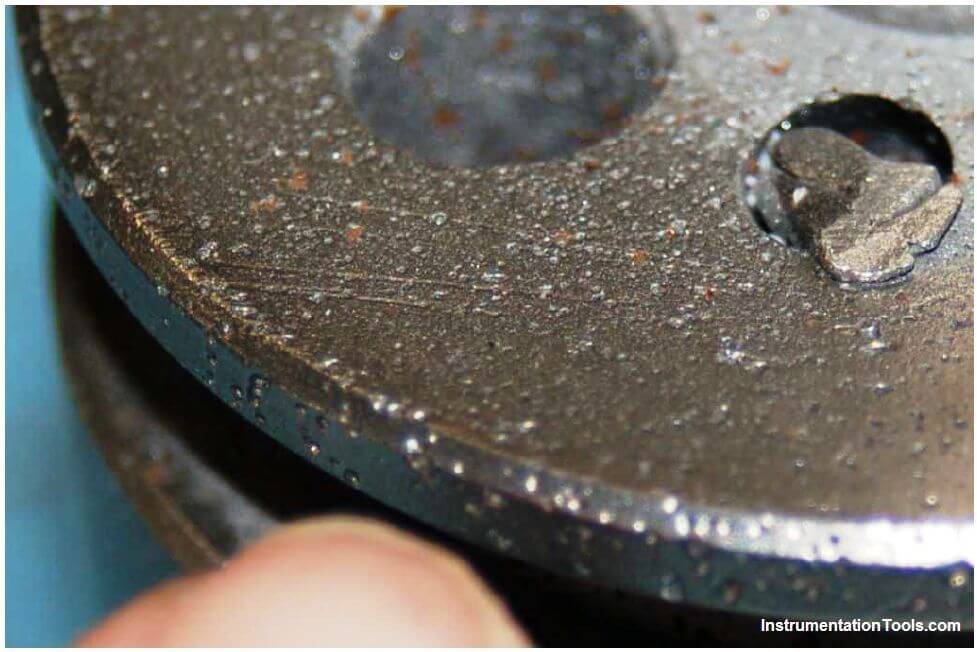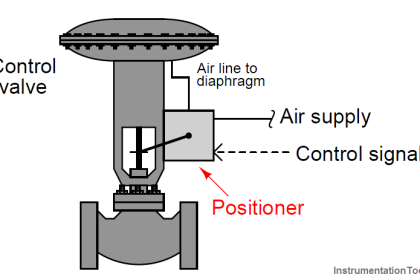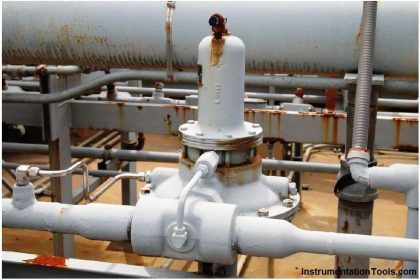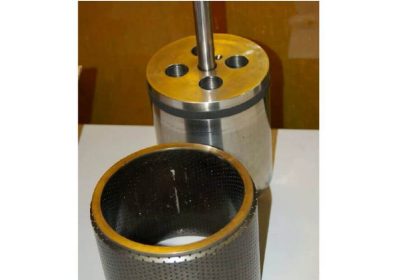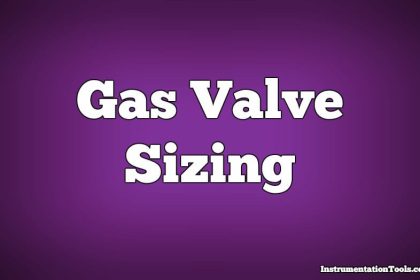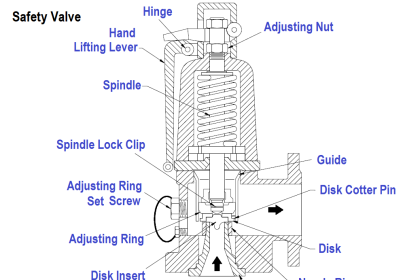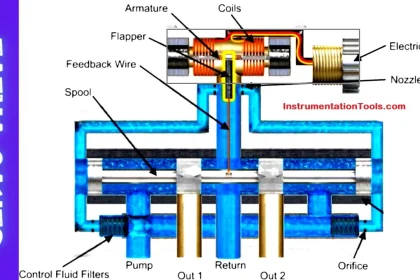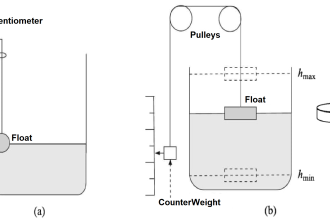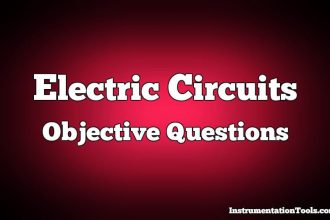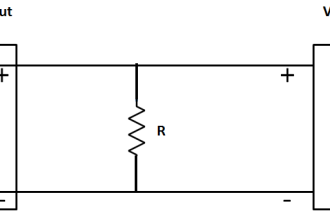Corrosive chemicals may attack the metal components of control valves if those components are not carefully selected for the proper service.
Control Valves Chemical attack
A close-up photograph of a chemically-pitted valve plug shows pitting characteristic of chemical attack:
As discussed in previous article, the effects of corrosion are multiplied when combined with the effects of cavitation. Most metals develop what is known as a passivation layer in response to chemical attack.
The outer layer of metal corrodes, but the byproduct of that corrosion is a relatively inert compound acting to shield the rest of the metal from further attack.
Rust on steel, or aluminum oxide on aluminum, are both common examples of passivation layers in response to oxidation of the metal.
When cavitation happens inside a valve, however, the extremely high pressures caused by the liquid microjets will blast away any protection afforded by the passivation layer, allowing chemical attack to begin anew. The result is rapid degradation of the valve components.
